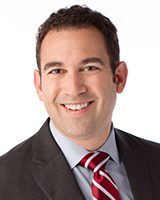New app promises doctor appointments on demand


PALO ALTO, Calif. (KGO) -- For a lot of people, the biggest trouble with a doctor's appointment isn't the doctor, but the appointment instead. Now, a Bay Area startup thinks it has a way to get rid of appointments, waiting rooms and co-pays for some of the most common reasons we go to the doctor.
"The customer in healthcare is called a patient, but to be honest with you when I'm not feeling well, I'm anything but patient. I'm actually impatient," HealthTap CEO and Founder Ron Gutman said.
And that's why Gutman founded HealthTap, a network for getting answers from doctors that's turning the concept of a primary care physician on its head.
A promotional video for the new service, Healthtap Prime, reveals all you have to do is press a button to speak with a doctor -- any hour the day or night. It sure beats the waiting room.
"The hurdle of getting into the doctor is so high that sometimes people just don't see the doctor," Dr. Geoffrey Rutledge, Healthtap Chief Medical Officer, said.
Rutledge says he hopes the service can take the place of that first office visit -- to get a referral to a specialist, or even some common prescriptions.
"Many doctor office visits do not actually require a physical exam. Many times patients are looking for information or guidance or counseling about a problem," Rutledge said.
HealthTap Prime does that with HD video on whatever device you have handy. You can send pictures of the problem, or copies of lab results to find out if it's something minor or if it's serious.
"Some will tell you no, actually it's time for you to go see a doctor or even run to the emergency room right now," Gutman said.
At the Center for Digital Health Innovation at UCSF, they knew it was coming.
"When I first heard about a service like this, I was thinking that it would be on an as-needed basis, akin to an urgent care center or to the CVS Minute Clinics," Dr. Aaron Neinstein said.
But that's why Neinstein's puzzled. HealthTap Prime is only available by subscription, at a cost of $99 a month for unlimited access. There's no option to pay for just one call.
"I think that the subscription model's an interesting experiment," Neinstein said.
But he thinks it could really take off when insurance companies catch up. Right now, most won't pay for visits by video, but some are taking notice.
"Some of the biggest players actually approached us interested in what we're doing. I think they're all seeing that we're the future of healthcare," Gutman said.






